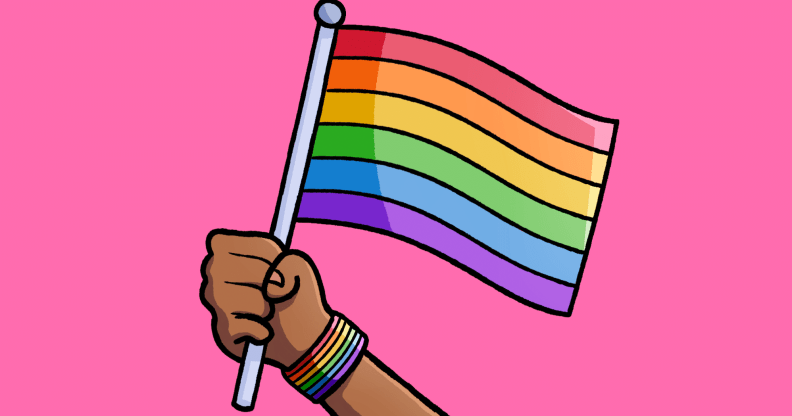Comment: The New Normal? What is the cost of the new gay idealism?

When journalist and blogger Andrew Sullivan wrote his seminal 1995 treatise on homosexuality, Virtually Normal, he became one of the first to clearly and powerfully articulate a notion of gay identity that – though unthinkable at the time – is increasingly becoming the status quo.
Sullivan proposed the idea of equal marriage and advocated the repeal of the ‘Don’t Ask, Don’t Tell’ policy, which barred gays from the military, when both arguments seemed at best blindly utopian, and at worst, dangerously subversive. He also dismantled the characterisation by religious conservatives of homosexuality as something irredeemably dysfunctional, while repudiating queer theory’s argument that homosexuality is inherently transgressive.
Now that, in the West at least, most of these political battles have been won in the name of gay rights, it’s easy to overlook just how radical Sullivan’s eloquent, assimilationist book is. After all, the mainstreaming of gay culture has conquered the farthest reaches of middle America, the UK and beyond. And this increasing visibility and acceptance has been fuelled by culture just as much as the ballot box – and shows no signs of slowing down.
Portrayals of gay men and lesbians on TV have become more complex and commonplace since shows such as Queer As Folk and The L Word created identifiable, strong characters and storylines that avoided sentimentality or stale cliché. Indeed, we’ve come a long way from the days of Sean Tully as Corrie’s token sharp-tongued stereotype, or those grisly Brookside lesbian storylines that seemed to have been scripted by Stephen King. Even much-maligned reality TV, such as Big Brother, has helped show gays to be just as dull, interesting, different and crashingly conventional as anyone else on screens the nation over.
And if art does indeed mirror life, then the latest gay TV series to take the viewing public by storm is a perfect reflection of gay culture’s current zeitgeist. The New Normal, originally aired on America’s NBC and now showing here across the pond on E4, is a sitcom created by Ryan Murphy, the screenwriter behind that other smallscreen jazz-handed slap in the face, Glee.
The show follows successful LA gay couple Bryan and David, who, discovering they have everything they want besides a child, enlist the help of Goldie to be their surrogate. However, their rent-a-womb plan doesn’t quite run as smoothly as expected: Goldie comes with personal baggage including a pre-teen daughter and an acerbic grandmother baffled at the idea of a child with two fathers.
As it happens, The New Normal is sharp, funny and clicks with the current moment in gay culture when marriage, adoption and all the other trappings of traditional ‘straight’ domesticity are very much in vogue. Yet on the other hand, I can’t help thinking that it also carries with it something slightly mawkish and straining for worthiness; sometimes tending towards the worst kind of political correctness.
One of the most pernicious side effects of political progress is complacency. When so many of the goals of gay equality have been achieved – and many more continuing to be on the horizon – it’s very easy to feel that the fight for gay rights is over, and that we’ve all inherited this shiny, glorious new homotopia free of prejudice and injustice. Of course, we haven’t – but the unsparingly white, male, middle-class world of gay affluence and privilege at the heart of The New Normal seems to suggest we could soon be faced with a new gay idealism: the flipside of the distorted, damaging gay stock types of the past.
After all, where is the portrayal of gays who don’t necessarily want to choose the respectable route of matching His & His hand towels, jetset trips to St Lucia and an adopted Korean baby? What about the gay people who happen to live on the margins, or outside of the acceptable face of gay society – immigrants, those who are HIV-positive, undergoing gender reassignment, or struggling with addiction? Not to mention gay people living outside the safety of the cosmopolitan city, or in countries such as Iran or Uganda, where bigotry and government-enforced homophobia still make the simple fact of choosing who you have sex with punishable by prison, torture or death. Where are their voices to be heard in modern books, film or TV?
When it comes to the squeaky cleanness of the new pinkwashed dream, I can’t help but thinking of Dolly Parton’s response when asked if she believed in equal marriage: “Sure, why can’t they get married? They should suffer like the rest of us do”. Gay experience is full of the same emotional turmoil, joy, neurosis, happiness and despair as the lives of straight people – and we risk ignoring this rich seam of gay stories by creating a new normal: a conventional model to which, we should bear in mind, many gays have no interest in conforming.
Now that in democratic, free societies, gay life is finally being lived by choice rather than fate, it’s crucial that gay culture reflects the reality of these lives in all their complexity – however troubled, dark, non-conformist or ‘un-normal’ they may be.
Daniel Culpan is a freelance writer based in London, who specialises in arts/culture.
The views in this article are his own and not those of PinkNews.co.uk

